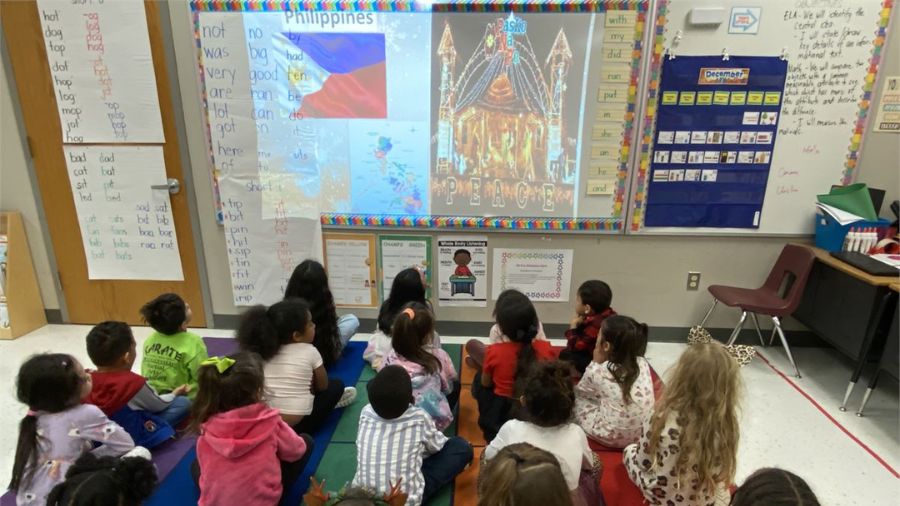For international educators coming to the United States on a J-1 visa for teachers, understanding the distinctions between early childhood education levels is essential. Pre-K (pre-Kindergarten) and Kindergarten may seem similar at first glance, but they serve different purposes in a child’s educational journey. This blog post will clarify the difference between Pre-K and Kindergarten in the US and provide insights for exchange teachers preparing to teach in American classrooms.
What is Pre-K?
Pre-K, short for pre-Kindergarten, is an early childhood education program designed for children typically aged 3 to 5. It focuses on preparing young learners for Kindergarten by fostering social, emotional, cognitive, and motor skills development through play-based learning.
- Curriculum: Pre-K programs emphasize hands-on activities, group interactions, and foundational literacy and numeracy skills. Activities may include storytelling, art, music, and structured play.
- Structure: Depending on the state and school, Pre-K can be full-day or half-day. Some programs are state-funded, while others are private.
- Purpose: The primary goal of Pre-K is to help children develop the skills necessary to transition into Kindergarten smoothly. It is not mandatory in all states.
What is Kindergarten?
Kindergarten is the first formal year of primary education for children, typically around 5 to 6 years old. It serves as a bridge between early childhood education and elementary school.
- Curriculum: Kindergarten follows a more structured academic approach, incorporating subjects such as reading, writing, mathematics, and basic science. Students are introduced to more formalized learning experiences, including group instruction and independent tasks.
- Structure: Kindergarten is usually a full-day program in most states, though some schools still offer half-day options.
- Purpose: Kindergarten lays the foundation for future academic success, emphasizing literacy, numeracy, and social skills. Attendance is mandatory in many states.

Key Differences Between Pre-K and Kindergarten in the US
| Feature | Pre-K | Kindergarten |
| Age Group | 3-5 years | 5-6 years |
| Curriculum | Play-based learning, social skills, early literacy/numeracy | Structured academics, formal instruction |
| Focus | Readiness for school, developmental skills | Academic preparation, foundational education |
| Mandatory? | No (varies by state) | Yes (in most states) |
| Duration | Half-day or full-day | Mostly full-day |
Why Understanding This Matters for J-1 Teachers
For teachers on a J-1 visa for teachers, recognizing the differences between Pre-K and Kindergarten in the US is crucial for adapting teaching methods and expectations. Here’s how BridgeUSA exchange teachers can contribute effectively:
Cultural Exchange: As part of the BridgeUSA program, J-1 teachers have a unique opportunity to bring global perspectives into early childhood education, helping American students learn about different cultures through storytelling, music, and activities.
Adapting Teaching Strategies: Since Pre-K is more play-based, teachers must integrate hands-on activities, while Kindergarten requires a more structured lesson plan.
Classroom Management: Younger Pre-K students may need more guidance in routines and social interactions, while Kindergarten students are beginning to develop independence.
The Impact of Cultural Exchange in Early Education
Through the BridgeUSA J-1 Visa program, international teachers contribute to enriching U.S. education by sharing diverse teaching styles and cultural perspectives. These exchanges foster people-to-people diplomacy, creating lifelong connections between international educators, American students, and host schools. By teaching at both of these levels, J-1 teachers help shape young minds in Pre-K and Kindergarten classes and promote mutual understanding between the US as well as other countries.
Join the Cultural Exchange Movement
Spirit Cultural Exchange is proud to support international educators through the J-1 visa for teachers program. By participating, teachers gain professional experience in the U.S., enhance their skills, and contribute to the richness of American education.
If you’re interested in learning more about the BridgeUSA J-1 Visa program for teachers, visit our website or join Americans for Cultural Exchange to support international education initiatives.

